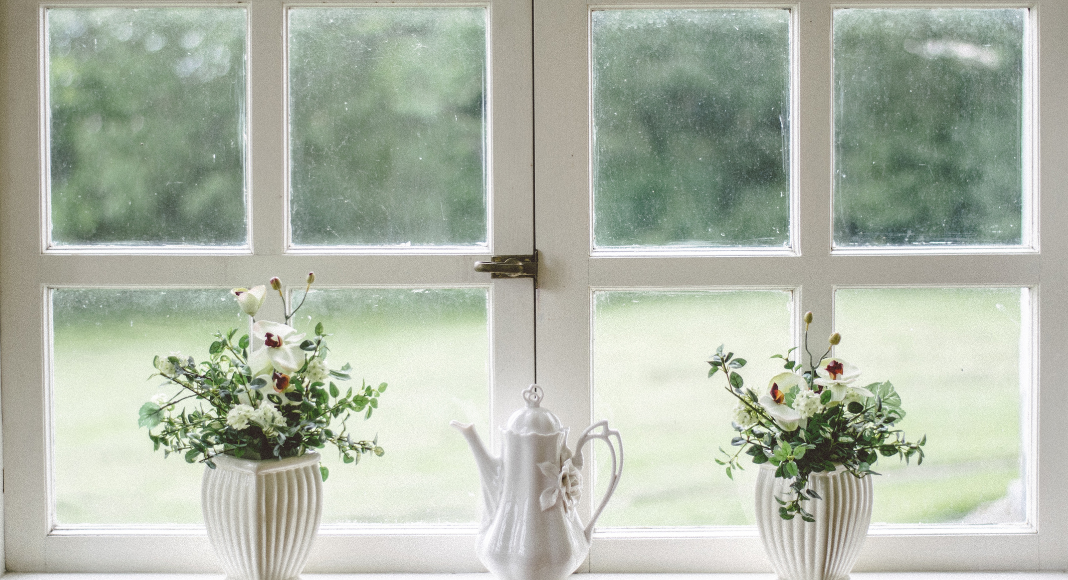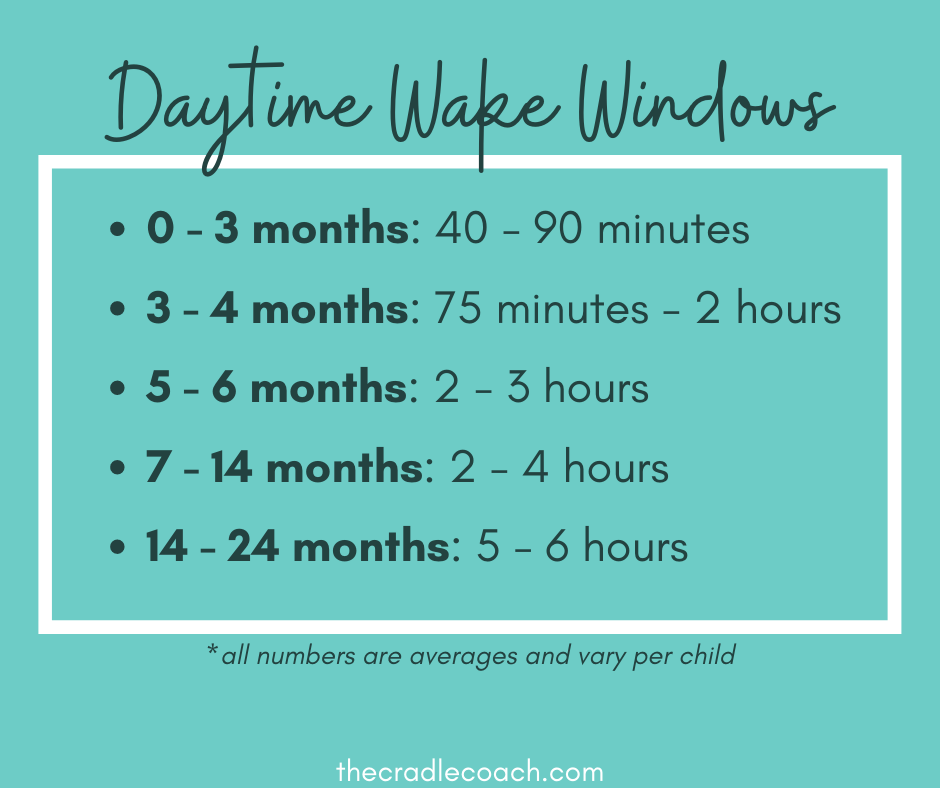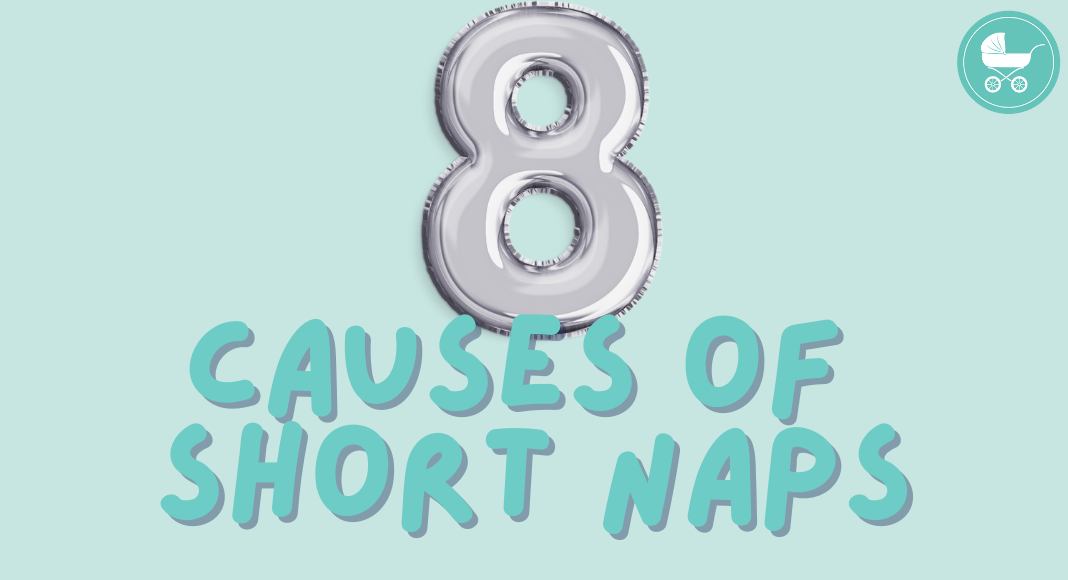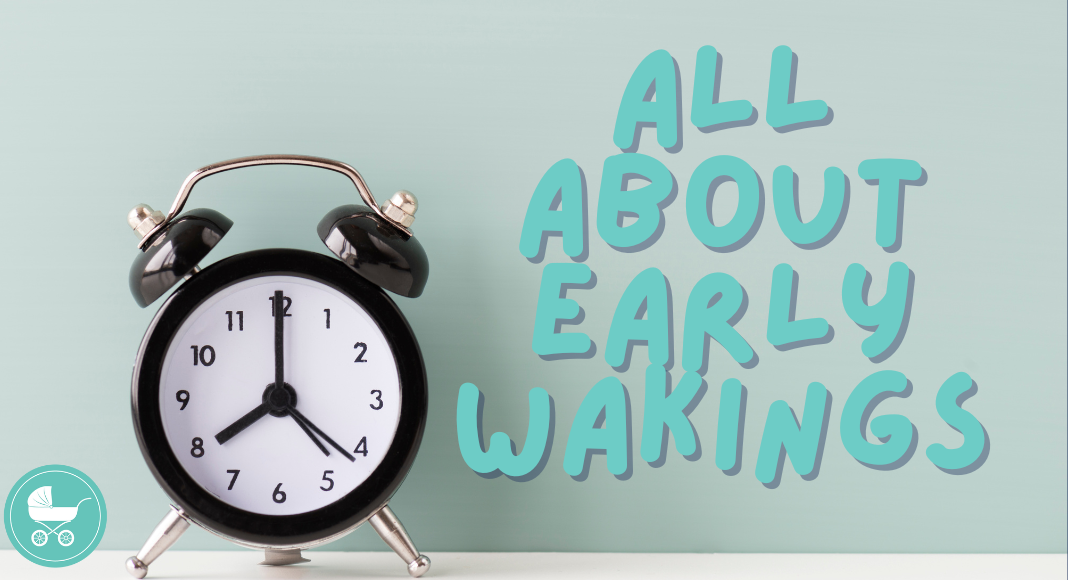
October 21, 2020
What are wake windows? They are a timeframe that your baby can stay awake in between naps and a good way to predict nap times when you are trying to get your baby into some sort of sleep routine. New moms, we are in survival mode from day one! It can often feel like a […]
Wake Windows vs. Set Schedules
What are wake windows? They are a timeframe that your baby can stay awake in between naps and a good way to predict nap times when you are trying to get your baby into some sort of sleep routine.
New moms, we are in survival mode from day one! It can often feel like a constant guessing game — are they hungry/tired/cold/hot/gassy? Wake windows can help you hopefully answer and eliminate one of those guesses, and moving to a set schedule should take “tired” out of the equation altogether.
Daytime wake windows for babies up until 2 years old are as follows:

You can start using wake windows from the beginning, but remember that newborn babies are also figuring it out as they go along. The wake windows “work better” and become easier to follow and predict as babies get a little older. A 0-3 month old has that short wake window of 40-90 minutes, but needs as many naps as they can/want at this age (about 4-5 hours total throughout the day). As they get a little older, the wake windows lengthen as the number of naps goes down. This is when we recommend moving to a set schedule.
A set schedule will still use the same wake window times, but they will not be based on the last wake up time, but rather set nap times throughout the day. When you are solely using wake windows, nap times can be unpredictable and inconsistent. You might have a morning nap end at 9am one day and use the wake window to put your baby back down by 11am, but the following day their morning nap lasts until 10am and then you are moving their next nap back to 12pm.
Because babies thrive on consistency and predictability, we love to put them on a set schedule — utilizing wake windows, but focusing on set wake and sleep times throughout the day. By doing this, you are helping to train their body clock to know what time is for sleeping and when they should be awake. Your baby will be getting the amount of sleep they need, and it makes planning your day so much easier.
We recommend moving to a set schedule around 4 months. This is the perfect age to sleep train and really start being consistent with those set wake and sleep times.
Knowing wake windows can be beneficial even if you are on a set schedule for times when you have to get off schedule (travel, appointments, etc). They allow you to recognize that, yes, your baby has been awake for a certain amount of time and would definitely benefit from a nap.
However you choose to set your day, being aware of the amount of sleep your child needs throughout the day and focusing on them getting that sleep is what is most important! We are here to support you through the wake windows, the schedule setting and the sleep training!
Get instant access to our free sleep class for children from newborn to 5 years old. You will learn how to get your child to sleep independently -- and all through the night!
Get Your Child To Sleep All Night Long in as Little as 7 Days!
join the free class
THE CLASS


